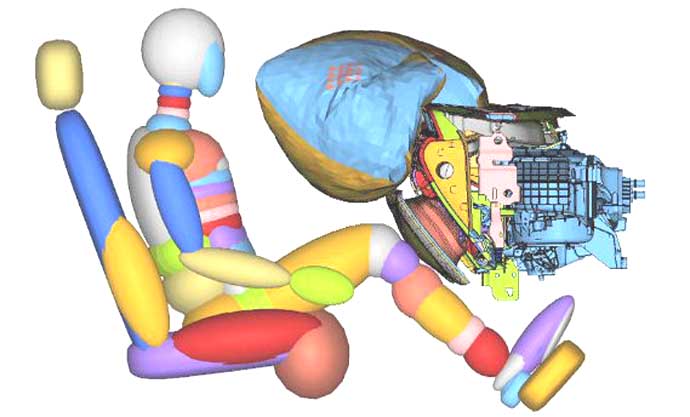The use of airbags has greatly improved road safety for car occupants and the technology has now spread from steering wheels to almost every part of a car’s interior – including the glove compartment.
A series of crashes in the early 1950s that resulted in gruesome injuries caused by glove compartment doors led to the removal of sharp edges, and now Ford has made further improvements to this area of car interior design by incorporating an airbag into the glove compartment door.

The glove compartment airbag protect a driver’s knees in the event of a crash and the new design represents a simpler solution that previous attempts.
Ford included a Lifeguard Design package on its cars in the mid 1950s that included a dish-shaped steering wheel, sensibly-placed knobs and instruments, and stronger door catches. As an option, motorists could order lap belts, a padded dashboard and sun visors, and a shatter-resistant rear view mirror.
General manager of Ford at the time, Robert McNamara, believed that car makers had a moral imperative as well as a commercial incentive to develop safer cars and educate consumers.
In these early days of safer car design, a tiny percentage of drivers ordered seat belts for their cars. Some felt they might be trapped inside their cars, whilst for others the very presence of seat belts questioned their competence as drivers or the structural integrity of the car.
Chris Beazer
And, while car occupants feel (and are) ever more safe in their metal boxes, the other road users are not afforded any more protection apart from (where bike riders are concerned) some white lines painted on the road and the advice to wear some polystyrene on the head which protects them from a fall onto the road at speeds of up to 12 mph (regardless of the speed of any vehicle that hits them).
Angela
Why were these excellent safety ideas never put on the market?